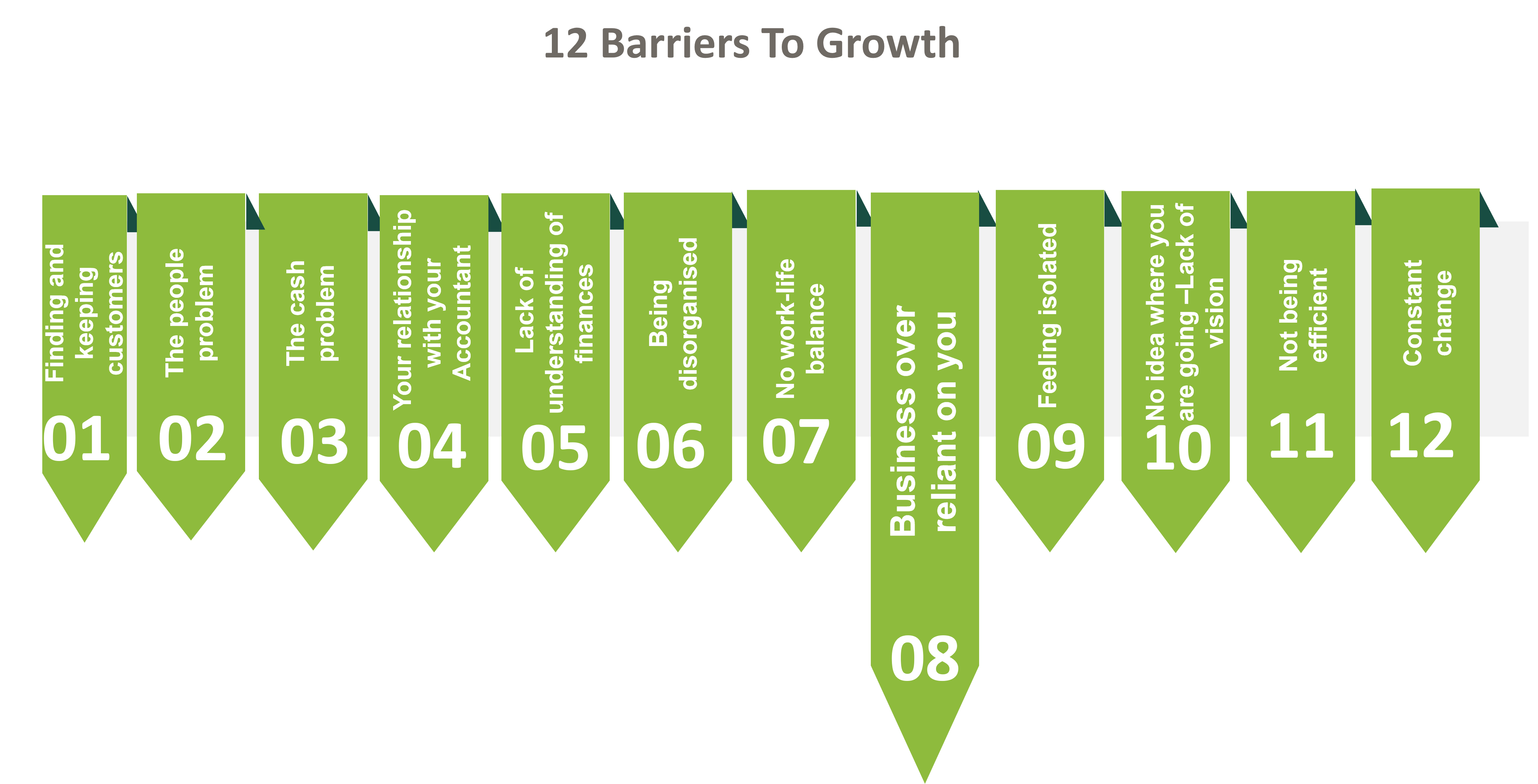Business Over Reliant On You

If you are the founder of your business, then it was necessary at the beginning, for it to completely revolve around you but as the business grows you may well become the problem or the business relying on you so much becomes your problem. [See Work-Life Balance]
A business is a collection of processes and people that all need to work as an independent machine to produce output – if you thought of it as a production – a car production line outputting Teslas if the production line needed Elon Musk to sign off each car. How many do you think would drop out – or how many hours would he need to work?
The thought of Elon Musk personally fitting the number plates to each Tesla as they roll off the production line and him being the only one in the factory that can do it is ridiculous. But why is that more so than the business that relies on you in any of its key processes?
Long term this is unsustainable. You must make your business less reliant on you.
This can be achieved in several ways the first is to start looking at your business from a completely different perspective not from the point of view of a founder or owner but from a slightly elevated view – imagine looking at the plans for a building project – taking a step back.
Identify all the elements in the business that you do that are critical and then start looking at how you can give these away to your employees – if you have no employees then get some – if you don’t want to have any employees then find some outsourcers.
Delegate this work but make sure you follow these Do’s and Don’ts of delegation:
Do
- Keep your team updated on what the priorities are so they know what is important to the business
- Be clear about your team’s level of authority
- Be clear on what you expect with regards to time and effort needed to complete assigned tasks
- Be patient, and let people learn and grow
- Use delegation to help develop peoples’ skills
- Give your team support to help them influence at a higher level
- Give feedback on how well a job was done
Don’t
- Underestimate how long it might take action to get done – especially when people are learning
- Micromanage – Don’t expect your team to report back on every single detail
- Make every single decision or your team will not be empowered to make the right call
- Assume that your team can read your mind
- Delegate things that you should be doing
- Delegate to people who are already overloaded
- Give tasks to people who you know cannot complete the task
Systems
If you are going to delegate to your employees, then you should document the processes you want them to follow. This will mean they won’t make it up as they go along, and you will be confident they are doing it your way to meet your standards of quality and service and get things right the first time.
In his book replace “The E-Myth – why most small businesses fail and what to do about it” Michael Gerber talks about creating a system and replacing yourself with it.
There are 5 steps to Systemising a business. That’s it. And these are as follows:
Step 1. The first step is to identify the roles in your business. This means all of the “hats” that people wear, not the names of the people in the business. This is useful when it comes to processing mapping as you can see all of the roles that are interacted in a process and, as the business grows, it can help guide you on the different functions. It can also let you know if you are doing too much yourself!
Step 2. The second step is to identify the processes in businesses. This is a full list of every process. From sales to recruitment to finance and product/service development. Writing this list helps you to know where to start. By prioritising them by urgency (you start with the ones that are causing you problems first), you can create a plan on what to process map first.
Step 3. The third step is to map out the process step by step with the team who use the process. While creating a flow diagram, you also will identify any issues in the process that you need to overcome, spot opportunities to make improvements and create a list of documents such as checklists and instructions that the users of the process will need to follow.
When you have lots of different roles involved in the process, it is useful to use a “swim lane” process map to show visibly the way that the work moves through the roles in the process. Jotting each step down on post-it notes that you can pick up and move is also really useful.
By involving the team in the process map, not only do you find out where the issues are, but it also helps a bit further down the line when you are implementing the system as they will be following the processes that they mapped and agreed.
Step 4. The fourth step is to document the process. This typically starts with writing down the mapped process; we like to use Lucid Chart. You will also need to write down the process into something that can be followed with clear instructions. A procedure with guidance on what to do at each step of the map is one example of a document, but it could also be a checklist to follow, a list, a video clip showing you how to do a task, or photographs of what “good” looks like – don’t overkill with lots of words to make things more complicated than needed.
The documents will then need to be checked to make sure they do what you need them to do and kept in a controlled way.
Step 5. The final step is to implement the System. It’s a lot of work getting through steps 1 to 4, so don’t fall here. As you have involved the team in mapping the process, it should make it easy, but you will still need to do the following to implement it successfully:
- Run through the details of the system with all users
- Demonstrate the system practically, and work together to find any flaws
- Ask them to follow it with you observing, to test if it succeeds
- Review it at least once a month for 3 months.
With appropriate delegation and systems in place, your business will not be over-reliant on you. Wouldn’t that be good?
If you are the founder of your business, then it was necessary at the beginning, for it to completely revolve around you but as the business grows you may well become the problem or the business relying on you so much becomes your problem. [See Work-Life Balance]
A business is a collection of processes and people that all need to work as an independent machine to produce output – if you thought of it as a production – a car production line outputting Teslas if the production line needed Elon Musk to sign off each car. How many do you think would drop out – or how many hours would he need to work?
The thought of Elon Musk personally fitting the number plates to each Tesla as they roll off the production line and him being the only one in the factory that can do it is ridiculous. But why is that more so than the business that relies on you in any of its key processes?
Long term this is unsustainable. You must make your business less reliant on you.
This can be achieved in several ways the first is to start looking at your business from a completely different perspective not form the point of view of a founder or owner but from a slightly elevated view – imagine looking at the plans for a building project – taking a step back.
Identify all the elements in the business that you do that are critical and then start looking at how you can give these away to your employees – if you have no employees then get some – if you don’t want to have any employees then find some outsourcers.
Delegate this work but make sure you follow these Do’s and Don’ts of delegation:
Do
- Keep your team updated on what the priorities are so they know what is important to the business
- Be clear about your team’s level of authority
- Be clear on what you expect with regards to time and effort needed to complete assigned tasks
- Be patient, and let people learn and grow
- Use delegation to help develop peoples’ skills
- Give your team support to help them influence at a higher level
- Give feedback on how well a job was done
Don’t
- Underestimate how long it might take action to get done – especially when people are learning
- Micromanage – Don’t expect your team to report back on every single detail
- Make every single decision or your team will not be empowered to make the right call
- Assume that your team can read your mind
- Delegate things that you should be doing
- Delegate to people who are already overloaded
- Give tasks to people who you know cannot complete the task
Systems
If you are going to delegate to your employees, then you should document the processes you want them to follow. This will mean they won’t make it up as they go along, and you will be confident they are doing it your way to meet your standards of quality and service and get things right the first time.
In his book replace “The E-Myth – why most small businesses fail and what to do about it” Michael Gerber talks about creating a system and replacing yourself with it.
There are 5 steps to Systemising a business. That’s it. And these are as follows:
Step 1. The first step is to identify the roles in your business. This means all of the “hats” that people wear, not the names of the people in the business. This is useful when it comes to processing mapping as you can see all of the roles that are interacted in a process and, as the business grows, it can help guide you on the different functions. It can also let you know if you are doing too much yourself!
Step 2. The second step is to identify the processes in businesses. This is a full list of every process. From sales to recruitment to finance and product/service development. Writing this list helps you to know where to start. By prioritising them by urgency (you start with the ones that are causing you problems first), you can create a plan on what to process map first.
Step 3. The third step is to map out the process step by step with the team who use the process. While creating a flow diagram, you also will identify any issues in the process that you need to overcome, spot opportunities to make improvements and create a list of documents such as checklists and instructions that the users of the process will need to follow.
When you have lots of different roles involved in the process, it is useful to use a “swim lane” process map to show visibly the way that the work moves through the roles in the process. Jotting each step down on post-it notes that you can pick up and move is also really useful.
By involving the team in the process map, not only do you find out where the issues are, but it also helps a bit further down the line when you are implementing the system as they will be following the processes that they mapped and agreed.
Step 4. The fourth step is to document the process. This typically starts with writing down the mapped process; we like to use Lucid Chart. You will also need to write down the process into something that can be followed with clear instructions. A procedure with guidance on what to do at each step of the map is one example of a document, but it could also be a checklist to follow, a list, a video clip showing you how to do a task, or photographs of what “good” looks like – don’t overkill with lots of words to make things more complicated than needed.
The documents will then need to be checked to make sure they do what you need them to do and kept in a controlled way.
Step 5. The final step is to implement the System. It’s a lot of work getting through steps 1 to 4, so don’t fall here. As you have involved the team in mapping the process, it should make it easy, but you will still need to do the following to implement it successfully:
- Run through the details of the system with all users
- Demonstrate the system practically, and work together to find any flaws
- Ask them to follow it with you observing, to test if it succeeds
- Review it at least once a month for 3 months.
With appropriate delegation and systems in place, your business will not be over-reliant on you. Wouldn’t that be good?



